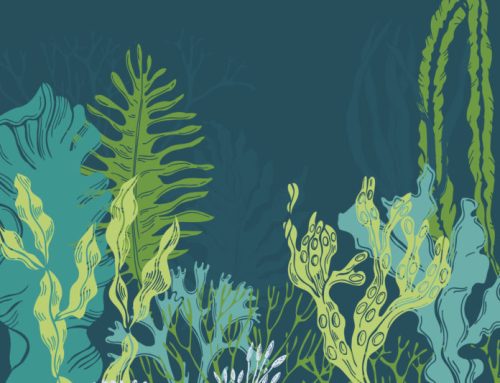Nori and Laver are often used interchangeably to describe the same thing, but are they really the same? And are they good for you?
What is Laver?
Laver is an edible seaweed and is often used in a traditional Welsh dish called Laverbread. It’s mostly found on the western coast of Great Britain and the eastern coast of Ireland, along the Irish Sea. Parts of Japan have been cultivating Laver, and it’s often used in a Japanese dish called a meat pancake. The most common Laver is Purple Laver with a smooth-like texture, that is classified as red algae. It has a brownish color, and when boiled, comes to a dark green color. Among all seaweeds, it is not most common because the fronds are only one cell thick. Laver has a high level of minerals, including iodine and iron. Iodine is what gives Laver it’s robust flavor, like the flavor of oysters or olives.
It’s not exact when Laver was first being consumed, but it can be dated back to the 12th century in Pembrokeshire mentioned by Giraldis Cambrsis (Gerald of Wales), while on his adventure around Wales.
Nori (Laver) is probably the type of seaweed that people see the most in the U.S. Nori, sometimes referred to as Laver, is made from red alga. Nori is produced by a drying process and comes in neat square or rectangle sheets. Although most commonly seen as the “black wrapping” of a roll, Nori is also great right out of the bag. Unlike some other types of “seaweed” you do not soak Nori in water. If you do so – it will fall apart.
How is Laver eaten?
Laverbread is a traditional Welsh dish and is still widely consumed across most of Wales. When the Laver is boiled, it comes to a gelatinous consistency and can be eaten or sold as is, or traditionally mixed with oatmeal and then fried. Try frying it in bacon fat or butter for an even more flavorful dish! Welsh legend Richard Burton, even calls Laverbread the “Welshman’s Caviar.”
Laver is also commonly eaten with bacon and cockles, which is a traditional Welsh breakfast dish. Because of the thin consistency, it can also be used as a sauce to coat fish, meat, pasta, etc.
Another species of Laver is found in the UK and is used in rolling sushi. The Japanese refer to this as Nori (as mentioned before). This type of Nori does not grow naturally around the UK, but is harvested commercially in the Japanese region due to the vast amounts of Nori that’s used in Japanese sushi dishes. Nori then began to be used in the United States (in dry form) and could be found in natural and international food stores. It was previously only consumed in a paste-form, but then was dried in sheets due to it’s regular use in sushi dishes.
Is Laver nutritious?
Laver (or Nori) is considered to be a nutritious seaweed with high levels of iodine, iron and protein. It also contains Vitamin B2, Vitamin A, Vitamin C and Vitamin D, and can even increase energy levels. It also contains a person’s daily amount of 22% potassium. Although it’s considered to be healthy, it is advised to eat Laver (Nori) in moderation, due to it’s high levels of sodium.
Is there any other way to benefit from Nori (Laver) without eating it?
Seaweed supplements are becoming increasingly popular as people learn more about the high nutritional value of sea vegetables and seaweed, such as Laver (Nori). Supplements allow you to enjoy all the healthy nutritional benefits of Nori (Laver) such as Vitamin D, Iodine, Omega-3, Omega-6 and fucoidan without having to hassle with cooking seaweed or dry seaweed sheets. Another benefit of taking a supplement versus consuming Nori (Laver) is the being able to know exactly how much healthy iodine you’re consuming. When shopping for a supplement, always find a supplement from a reputable source, and look for a whole food seaweed supplement to make sure you’re getting the highest quality product.
Laver and Nori are the same and they are very healthy! Finding ways to incorporate this seaweed into your diet, either by eating it or taking a high quality supplement, can provide great health benefits!



